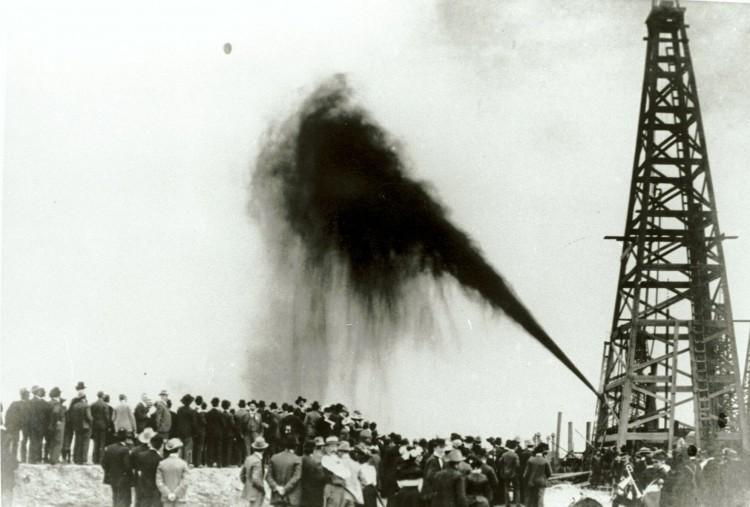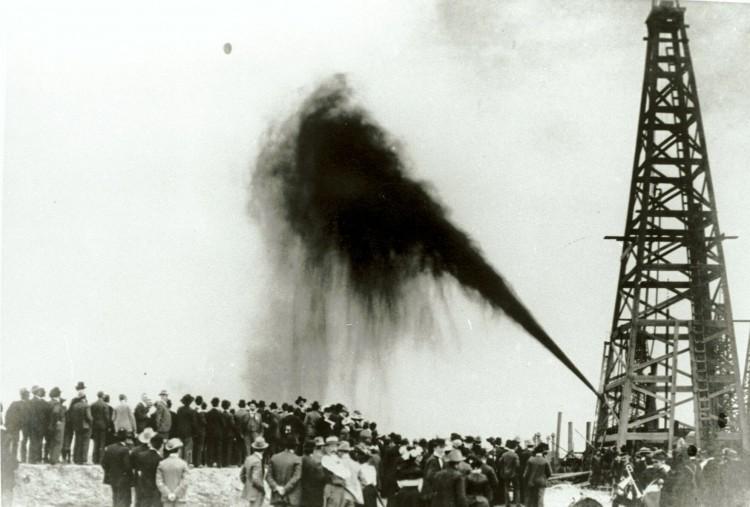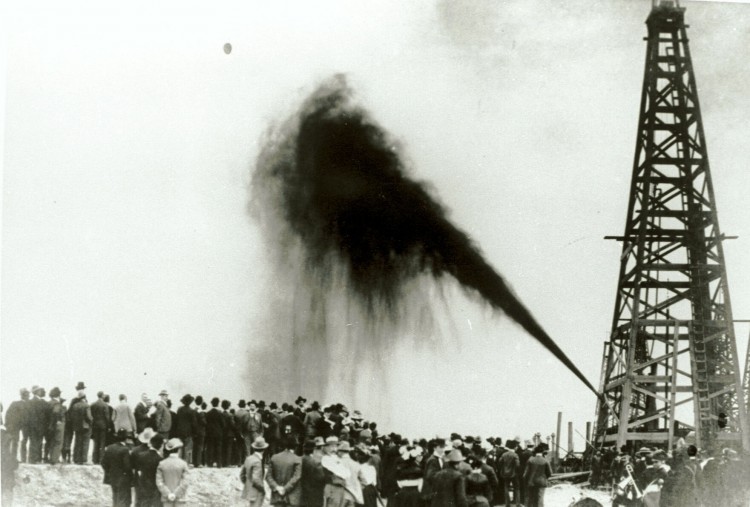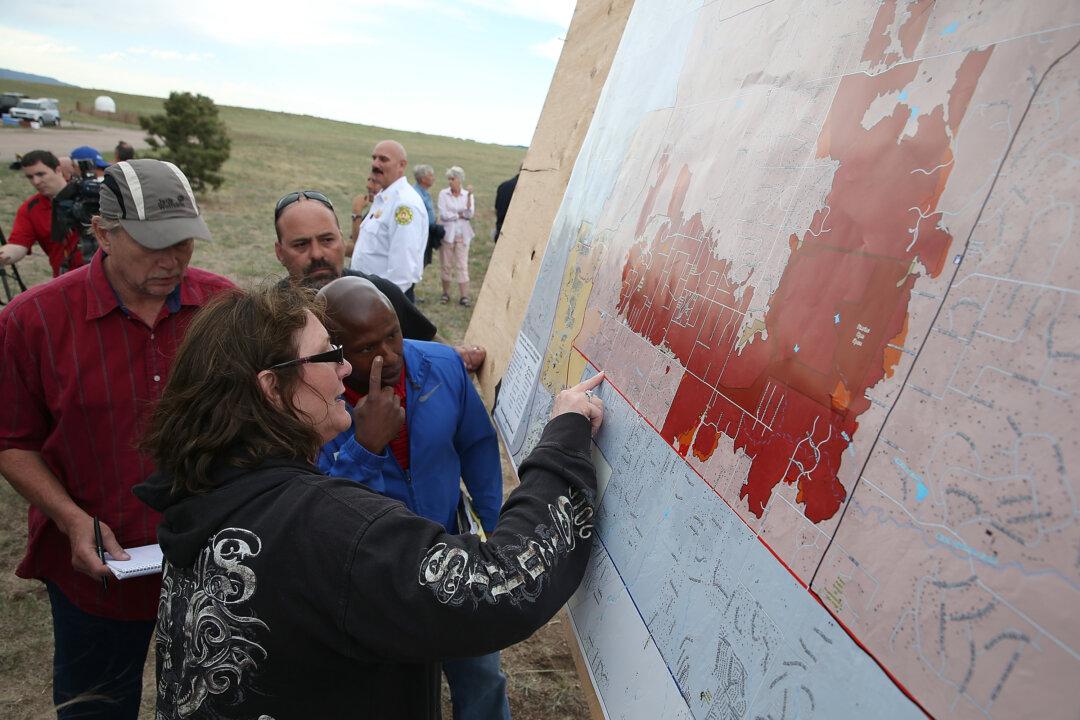Out West, there’s a modern-day story reminiscent of when men, armed with shovels and axes, flocked to the pristine wild land for glorified riches: golden nuggets. But gone are the horses and lassoes—these are the days of Mustangs and laptops.
Armed with rigs and drills, we once again flock West, but this time to a civilized land, with our sights set on the oily goo beneath our feet that keeps our motors roaring. Yet, as old wells are capped and more oil is found in the nation, concerns remain on how near or far oil and gas wells should be to our most cherished treasures: our children and their schools.
Once a forest ranger, Michael Chiropolos also practiced federal Indian law and advised the Wyoming Wind River tribes on oil and gas issues. Currently, he is the chief counsel of the lands program with Western Resource Advocates and has dedicated his career to challenging oil and gas development. He said it’s probably not that pleasant living in close proximity to a drilling or fracking operation. “I know I would sleep better at night knowing my kids and neighbors don’t have drilling near my home,” said Goldberg in a phone interview.
What’s new in Colorado, and what concerns Chiropolos the most, is the Niobrara shale, a rock formation that connects the state with Kansas, Nebraska, and Wyoming. It is being compared to the Bakken shale, which has been driving an oil frenzy in North Dakota for the past couple years.
According to Chiropolos, the Niobrara is being looked to as the new boom in Colorado and he is concerned about how close drilling should be to people, homes, schools, and communities—as he points out, the newfound oil glories are under most of metro Denver.
Yet, according Doug Flanders—who has worked with Congress and the U.S. Department of Energy and who is currently the director of policy and external affairs with the Colorado Oil & Gas Association—it may not be that the oil and gas rigs are too close to the schools; rather, it could be that the schools are too close to the oil and gas rigs.
“Colorado has a 100-year history of oil and gas development across the state. City boundaries and residential development have been encroaching into existing areas of oil and gas development, and many schools were constructed next to existing wells,” said Flanders in an email.
“The placement and construction of new schools are regulated by the local jurisdictions and the school districts,” said Flanders.
According to April Beach, who is a member of Erie Rising, a mom-powered grass-roots group that educates the public about what is “happening and going on around our homes and schools,” that is correct.
Beach said that there are nearly 350 oil wells in Erie and, since the town has been drilled for many years now, everyone just assumed it was safe—but the community doesn’t feel safe. “Somebody must be out there looking out for us and regulating this,” said Beach in a phone interview.
According to Beach, there are two schools that have oil wells very nearby: Erie High School, which is in a field “surrounded on all sides” by oil wells, and Aspen Ridge Charter, which was built after the wells were there.
Beach served on the family founding committee for Aspen when the school first opened. “Years ago, they found the land and said it had all these gas wells on it, but that it would be fine to just build around it,” said Beach.
The school was built, but according to Beach, parents and administrators were never fully educated about the risks. According to Beach, the problem is the law.
“The laws should have been in place to inform on the potential harm, since the wells were there. They just assumed that since the wells were there, that is was safe,” she said, adding there is a feeling in Erie that the laws are “not in favor of the people.”
Another big concern is abandoned oil wells. “In Colorado, there are many communities that have no clue that their property is on top of abandoned wells,” said Beach, noting their community parks are built above abandoned wells with huge plaques thanking the gas company for building the park. Yet, methane builds up in capped wells—especially if it’s not released.
The Wild West
Heading further out West to California, where movies are made, is Beverly Hills High School. If you’re catching a feeling that you may have seen a movie about this, you’re right, as the school has been the location of, or inspired, many films and TV series such as “90210.”
But what is most surprising, and perhaps least known, about the high school is that it has a 30-foot operating oil rig on campus, artfully decorated in mosaics. The oil and gas wells remain a constant concern to parents, students, and teachers.
Brian Goldberg, president of the Beverly Hills Board of Education, said that although California outlawed all oil wells on schools or near schools, Beverly Hills High School appears to be stuck with an oil rig operating on its grounds until 2016 because of what “grandfather did.”
The oil well was built before the school was built in the 1920s. “We feel that it’s not a compatible use, having an operating oil rig on a school campus, so we are in the middle of a lease that was signed in 1979,” said Goldberg, who said the majority of parents agree. But they have to wait for the lease to end.
Until then, the school has regular safety inspections. Since the state regulates the oil production, the California Environmental Protection Agency and the Water Board monitor the site, but that doesn’t make things better. Goldberg said that accidents do happen and that is why they want the oil production to stop.
During Goldberg’s five years on the board, he has seen some spillage, and times when oil or gas emitted, but “nothing serious to the level that we ordered an evacuation” during school. The rig is purposely on to the far side of the campus near softball, football, and track fields—away from instructional classes.
Plans for a metro subway to be built under Beverly Hills High School next to old oil pipes made news. The PTA Council for the Beverly Hills Unified School District made public a video in May opposing those plans. The video included special effects of fire flames, and experts spoke about the safety issues.
According to Goldberg, there are capped, abandoned oil wells underneath the high school that can create methane and benzene, which can spreads into the soil. Goldberg said that once you start disturbing the soil, there could be the potential for an explosion.
“We are very concerned about the subway potentially going underneath Beverly Hills High School,” said Goldberg. The school district has gone to court asking for more studies on the risks and finding other routes for the subway to take.
Fault lines and earthquakes occur in the West, adding more concern. Another high school, Belmont, was built on top of five abandoned oil wells and a fault line. These oil wells are connected to the Los Angeles City Oil Field. It underwent a drastic $400 million renovation, dealing with sulfur dioxide related to the old wells, according to a Los Angeles news report in 2008.
Goldberg said, “These sites … you don’t know what’s underground, and it hasn’t been probably mapped or detailed enough. [Belmont had] serious issues that took years and years to resolve.”
The Epoch Times publishes in 35 countries and in 19 languages. Subscribe to our e-newsletter.







